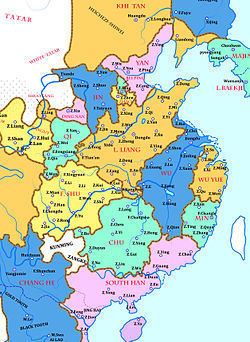Languages Middle Chinese 907-930 Ma Yin Became the State 907 907 | Government Monarchy 950-951 Ma Xichong Capital Changsha | |
 | ||
Historical era Five Dynasties and Ten Kingdoms Period | ||
No church in the wild
Chǔ (楚), often referred to as Ma Chu (马楚) or Southern Chu (南楚) to distinguish it from other historical states called Chu, was a kingdom in southern China during the Five Dynasties and Ten Kingdoms period (907–960). It existed from 907 to 951.
Contents
Hozier take me to church
Founding
Ma Yin was named regional governor by the Tang court in 896 after fighting against a rebel named Yang Xingmi. He declared himself as the Prince of Chu with the fall of the Tang Dynasty in 907. Ma’s position as Prince of Chu was confirmed by the Later Tang in the north in 927 and was given the posthumous title of King Wumu of Chu.
Territorial extant
The capital of the Chu Kingdom was Changsha (Tanzhou). Present-day Hunan and northeastern Guangxi were under the control of the kingdom.
Economy
Chu was peaceful and prosperous under Ma Yin's rule, exporting horses, silk and tea. Silk and lead coinage were often used as currency, particularly with external communities which would not accept other coinage of the land. Taxation was low for the peasantry and merchants.
Fall of Chu
After Ma Yin died the leadership was subject to struggle and conflict which resulted in the fall of the kingdom. The Southern Tang, fresh from its conquest of the Min Kingdom, took advantage and conquered the kingdom in 951. The ruling family was removed to the Southern Tang capital of Jinling. However, the following year, Chu generals rose against Southern Tang and expelled the Southern Tang expeditionary force, leaving the former Chu territory to be ruled by several of those generals in succession until 963, when the territory was seized by Song Dynasty. During these post-Chu years of de facto independence, the center of power was usually at Lang Prefecture (朗州, in modern Changde, Hunan).
